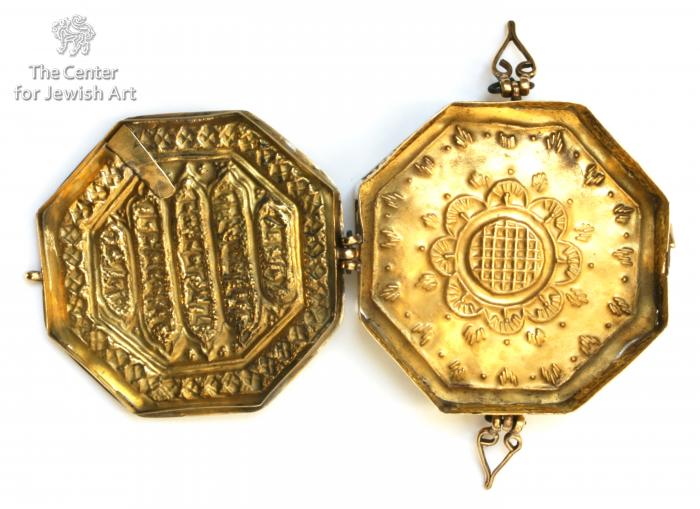
The following description was prepared by William Gross:
From earliest times, man has tried to protect himself from misfortune by the use of objects which he considered holy or otherwise (e.g., magically) potent. Amulets and talismans are items generally worn around the neck or wrist, carried in a pocket or purse or hung on a wall. They are meant to protect or aid those who carried or wore them. The Hebrew word for amulet, kame‘a, has the root meaning "to bind". Jewish amulets are usually comprised of texts (either letters or graphic symbols) that are inscribed on some sort of material; some may also contain plant matter or precious stones. The texts of amulets usually include holy names that are believed to have the ability to affect reality, along with incantations summoning angels or other magical powers. For the most part, an amulet has a specific purpose: to ease childbirth, facilitate recovery from illness, improve one’s livelihood, and so on, but in the modern world many are also made for general protection.
Gold is not a normal material from which amulets are made in Iran. The form of these amulets makes them even more unusual. The shape is an exact copy of a Moslem type of amulet in which a small octaganel box is created for the carrying of a small miniature Koran written on the same size eight sided paper. Such items were carried by people both in daily life and into battles by soldiers. The Jewish use only utilizes the empty eight sided box form, but with nothing inside, the amuletic power being provided by the talismanic words written on the tops and the sides of the two parts. The box shaped object in Islamic tradition has been made itself into a Jewish amulet. On the sides are written the name of the woman for whom the amulet was made and the date. Amulets dated from the19th century are also quite unusual. There were two pairs of this kind of amulet recorded, but one was stolen and apparently melted down for the value of the gold.
Inscription: Rivka ???????



